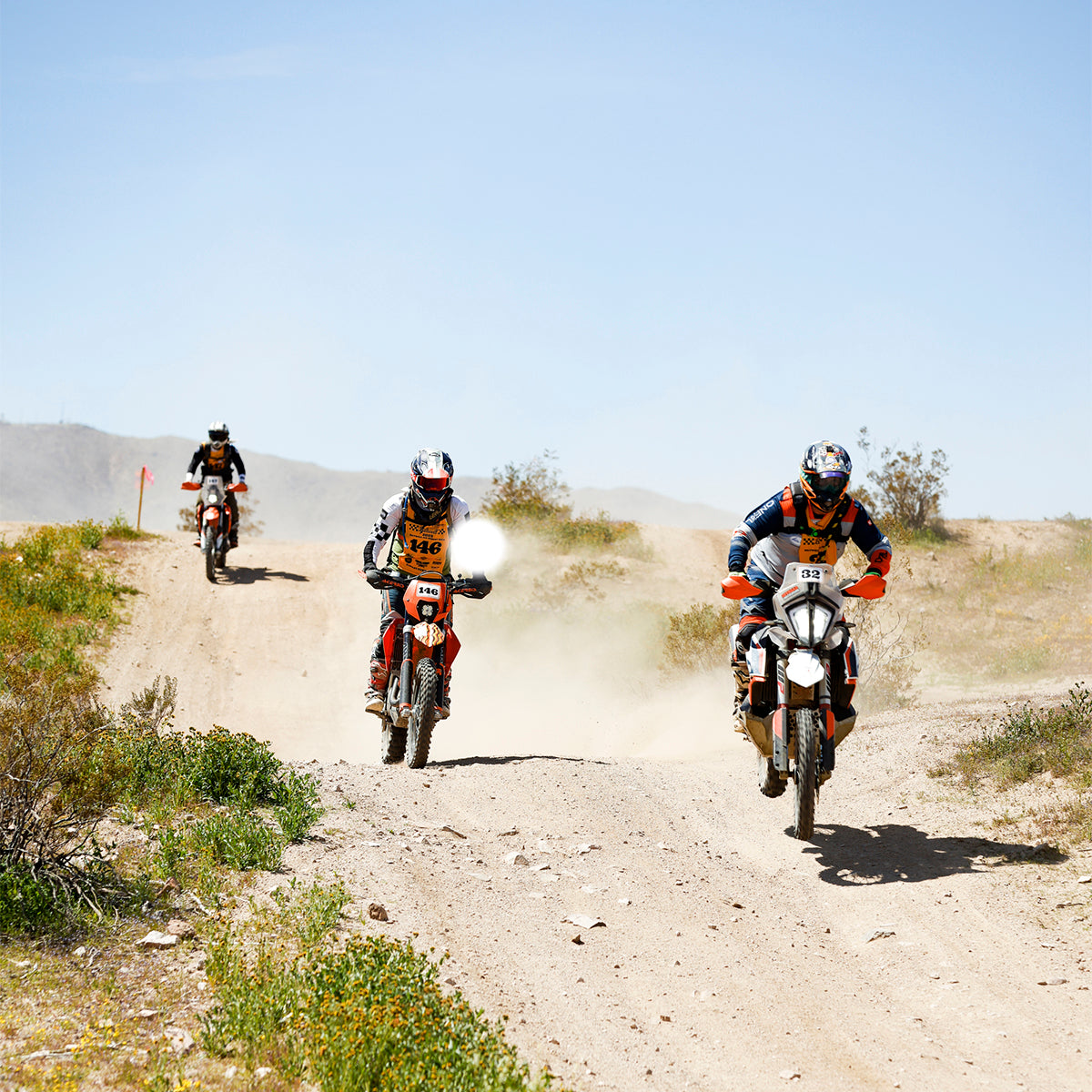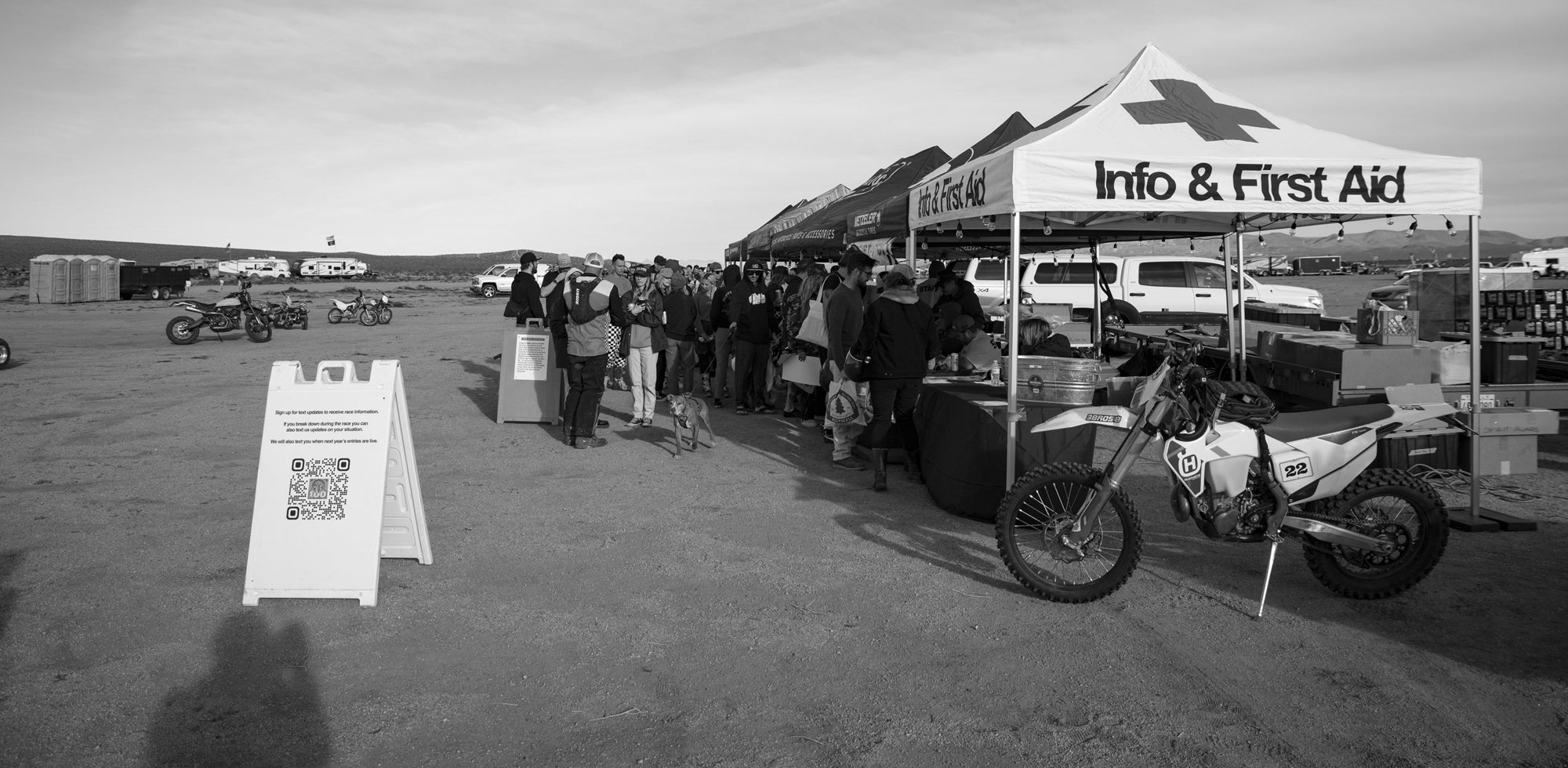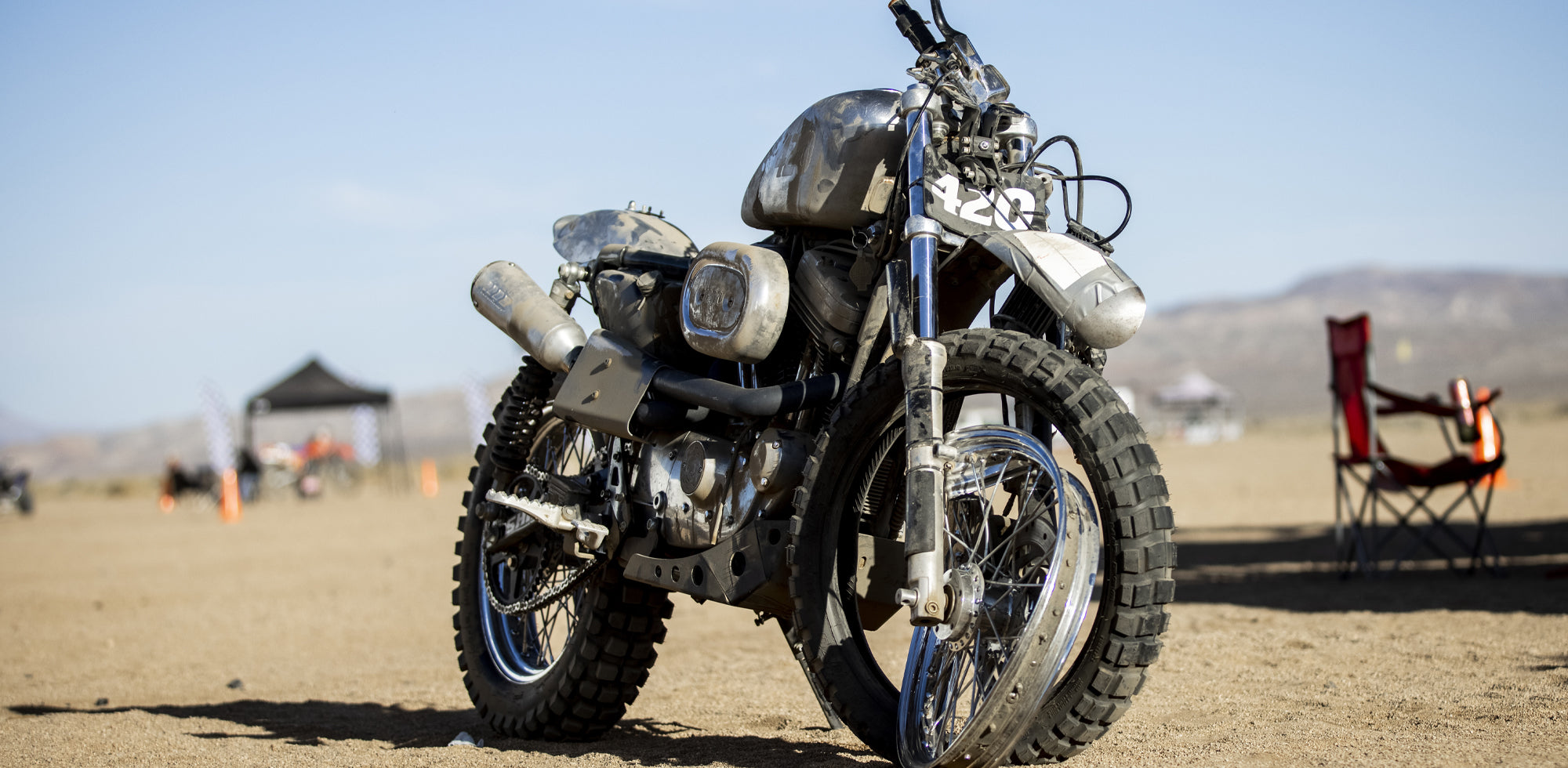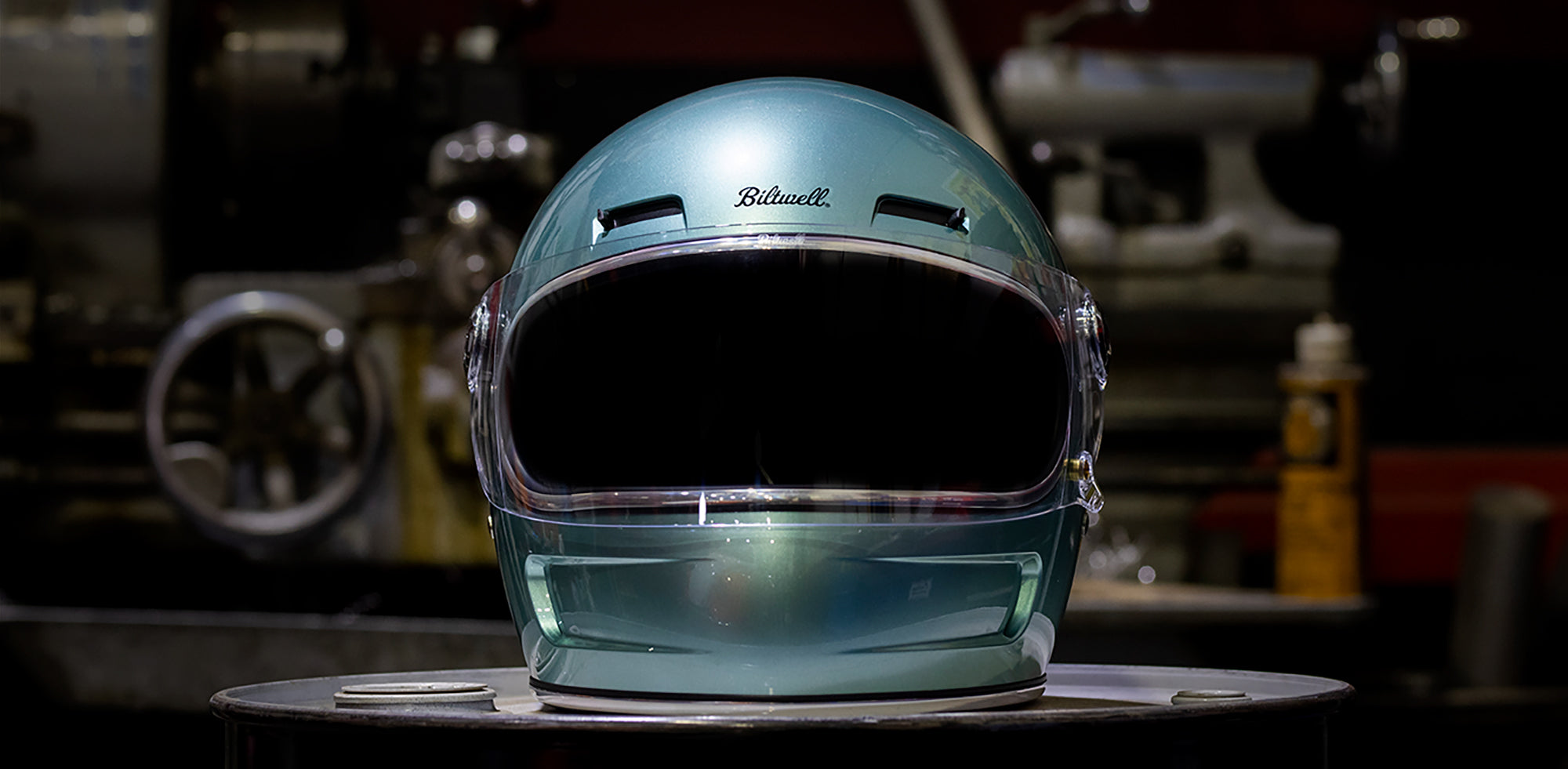SAFETY
Safety is Paramount
Riding a motorcycle as fast as you can in off-road terrain is inherently dangerous, especially once you start to show fatigue. When deciding on the limits of your own personal risk-management, consider stacking a few things in your favor. Since this race never gets too far from the pits, it’s easy to be complacent and think you don’t need to be prepared– you still do. You are one broken chain or collarbone away from spending a long afternoon in the desert sun, making things worse. Ironically, the majority of riders we stopped for last year with broken bikes, standing in the sun with no water were on modern dirt bikes. Just because you have a fancy bike doesn’t mean you aren’t gonna crash it or that it can’t break down! Here’s a couple desert survival tips you may want to consider.
Wear a light hydration pack that includes:
- Water (of course) as much as you can carry
- Hat
- Snack bar or two
- Cell phone, fully charged
- Basic tools, though these might be better in a hip sack or mounted to the bike
- First aid kit for yourself or others. Make sure to include a sling or cravat for isolating a shoulder/arm. You don’t really need bandaids and most of the junk that comes in over the counter kits
- Bill is a pyscho and also brings a small orange tarp for shade, or improvised stretcher, marking his position, etc. (Military guys, think VS-17 panel)
What to do if you break down:
- Immediately push your bike out of the way of other racers if possible, but stay next to the course
- Work on your bike in the safest possible spot, ie: not on the outside of a turn or top of a blind hill
- If you can not get it going, hand your “stuck stub” to the next rider who comes along and they will hand it in at the next check point. Make sure to write in what mile marker you passed last, name and bike number (bring a sharpie!).
- Stay with your bike, do not try to walk out. If you leave in some other way, leave a note on your bike and call the rescue number on your fender card with an update so we are not looking all over the desert for you!
- Call the phone number that will be printed on your fender card and given to you at registration. Most of the course has cell service, so this is a modern addition to the “stuck stub”. We have a dedicated dispatcher who’s only job during the race will be logging downed riders, keeping track of where they are and sending crews out to help or recover. This will be the first time we’ve used this method, so have a little patience. Last year, we had everyone back to camp long before dark and this year should be faster and more accurate.
- While you wait, hydrate, rest, have a smoke, whatever. Try to hide from the sun and wave riders by if you don’t need assistance so 100 people don’t waste time stopping for you. A simple thumbs up or “OK” sign generally works.
- All motorcycles recovered on course without riders or separately from a rider will be placed near the First Aid tent in the Registration/Stage area AKA the "DROP ZONE".

 Shop All Helmets
Shop All Helmets Shop All Optics
Shop All Optics Shop All Accessories
Shop All Accessories Shop All Gloves
Shop All Gloves Shop All Luggage
Shop All Luggage Shop All Parts
Shop All Parts Shop All Apparel
Shop All Apparel Shop All Etc.
Shop All Etc. Outlet
Outlet WTF Blog
WTF Blog


